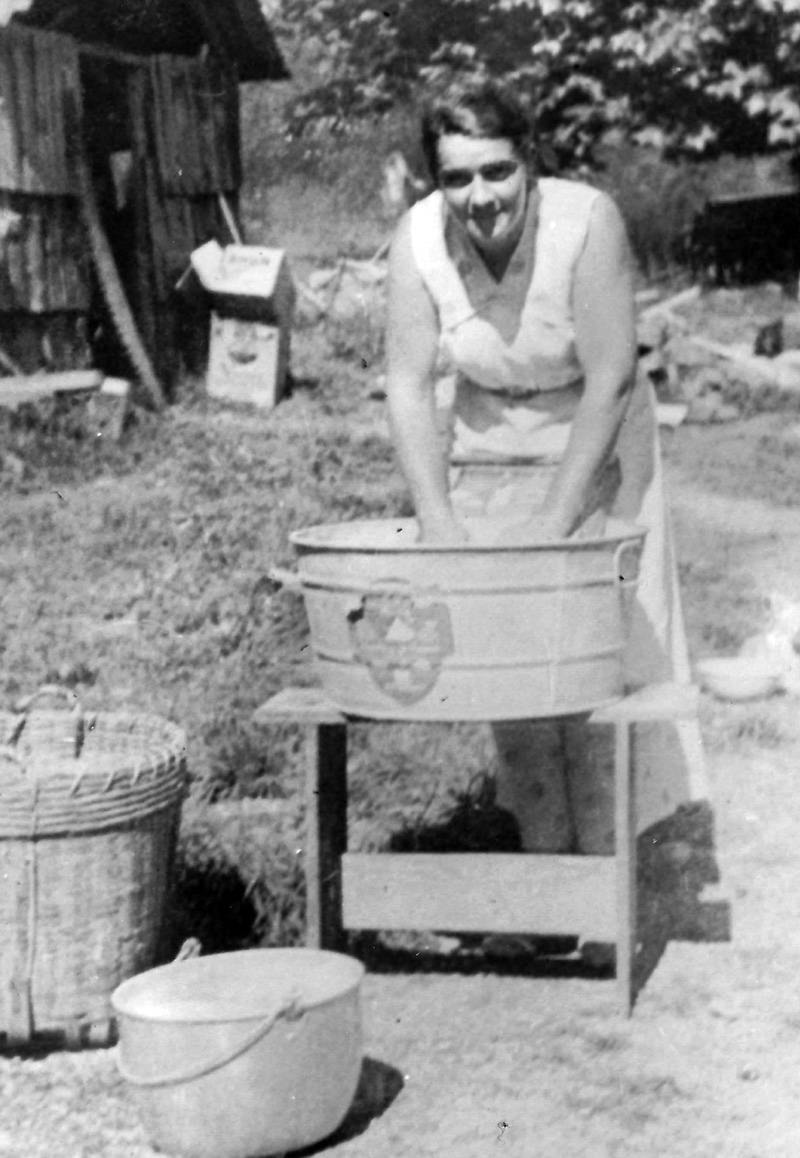One of the most significant personalities of the Shirley district, Jean Shannon Robinson embraced her new home wholeheartedly as she joined the settler families of Shirley in 1933. Her contributions to the life of her new community spanned almost six decades.
Born in Grand Forks, she grew up to earn a bachelor of arts at the University of B.C. in 1933, at a time when university degrees for women were not commonplace. Jean’s parents had moved out to Shirley where they bought land at Coal Creek (later named Kirby) and set up farming.
Jean fell in love with the place and with “Big Ed” Robinson, an easy-going burly logger descended from a family with a seal hunting background. Ed’s dad had grown up on a farm near Sacramento and came up the coast to join the sealing fleet. He married Ellen, one of the eight daughters of French Canadian voyageur Joseph Poirier, for whom Ecole Poirier is named.
Not afraid of hard work, Jean took on pioneering life with a will, as shown in the photo where she is doing the laundry with a tub and washboard and homemade soap. The water had been carried from the creek and heated on a nearby woodstove.
When she and Ed married, they made their home on West Coast Road and raised two sons, Jack and Donald. Jean was quick to join the Shirley Women’s Institute, a group she enjoyed working with throughout her life, and served for three years as secretary-treasurer on the B.C. provincial board. For the annual All Sooke Days, where husband Ed was a champion chopper, she was an enthusiastic worker.
When Shirley Community Hall was being built in the 1930s, Jean was one of those who got down on her knees and helped nail floorboards. She took part in civil defence in the Second World War and trained in St. John Ambulance First Aid, becoming an instructor. One of her most significant roles was in helping initiate the Kemp Lake Waterworks system and remaining dedicated to its purpose throughout her days. She took an interest in local politics as well.
When the Sooke Lions Club initiated the building of a museum early in the 1970s, Jean was thrilled to be able to contribute her local history knowledge, and gave years of dedicated and diligent assistance to the museum. Jean looked forward, as well as backwards, and in 1977 contributed a brief to the federal government’s West Coast Oil Ports Hearings.
•••
Elida Peers is the historian of the Sooke Region Museum.
